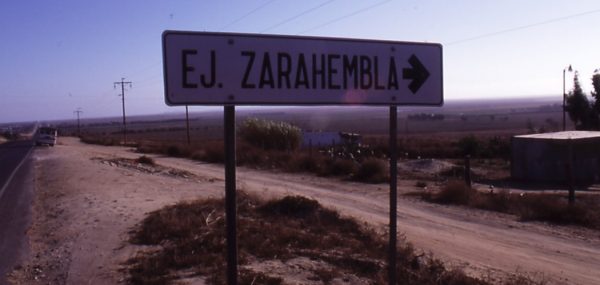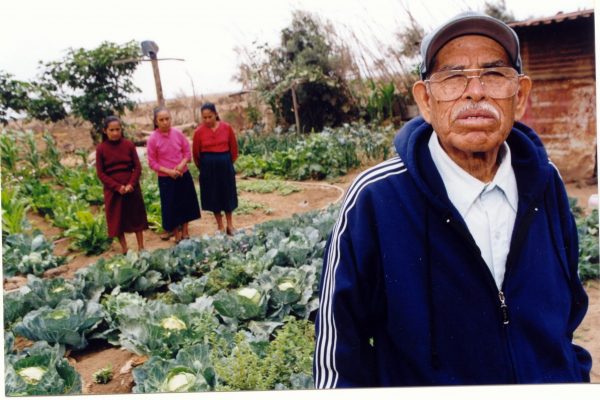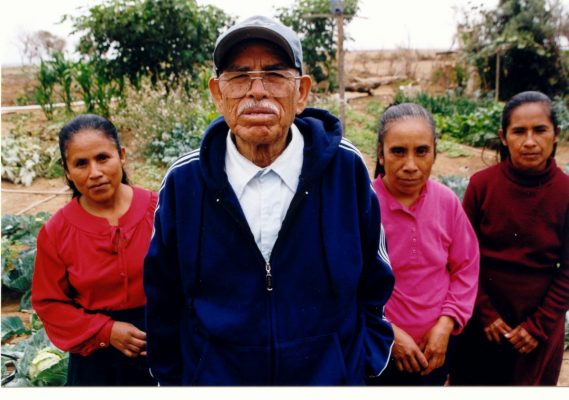In 1998, while I was living in Mexico, I had an encounter with the LeBaron clan, which has been in the news lately due to the massacre of family members in the state of Sonora, apparently at the hands of drug traffickers.

At the time, I was working on a story about the agricultural Valley of San Quintin, south of Ensenada in Baja California. I had noticed a highway sign – “Zarahembla” — on my bus trips up and down the valley.
Young Mormon missionaries on the bus one day spoke of it in frightened terms. The place was tainted, they said, by heresy and murder, excommunication and polygamy, and they were warned to keep away from it. Others said that was long ago; many people simply didn’t know the history.
So one day I got off the bus at the highway sign and walked a couple miles down into the community and introduced myself to Zarahembla’s patriarch, Fernando Castro.

Castro was 82, the last apostle of the LeBarons’ annointed messiah, Joel LeBaron. Castro had six wives, 42 children and an unknown number of grandchildren and great-grandchildren. He told me he stopped counting at 126.
He was a frail man, with large spectacles perched on his nose and a mustache of white whiskers curving around his mouth. He had children in Utah, Minnesota, Colorado, Phoenix, San Diego, Washington. Most of them were construction workers. Joel LeBaron had been also his son-in-law, father to Castro’s grandson — Jose Fernando LeBaron.
Castro lived isolated in the desert and entirely according to his religious beliefs. Baja California was where Oaxacan Indians, Sinaloans, lapsed Catholics were remaking themselves and forgetting their pasts. New Protestant churches along the peninsula highway, built from concrete block and slapped with white or blue or yellow paint, were signs of that rebirth.
This is what Fernando Castro did.
He told me the story of Joel LeBaron and the LeBaron clan. Suffice to say the LeBarons were polygamists in Utah who believed the oldest son, Joel, was the messiah returned to earth. The Mormon Church excommunicated them and the family and its followers fled Utah to northern Mexico. Their first outpost was in Chihuahua. But as years passed, they had Castro lead a band of followers west to colonize Baja California. They named that outpost Zarahembla – from a larger ancient city that Mormons believe once existed in the Americas.
Several years later, Joel LeBaron was murdered, in a story out of Cain and Abel, by his brother Ervil, who was jealous and believed that he was the messiah. The killing took place on a street in Ensenada in the 1970s. Without a messiah, the LeBaron utopia screeched to a halt. Castro followed his prophet’s vision and stayed at it, the faithful apostle. The bad water, the wind and murder blew away the other pilgrims and twisted Joel LeBaron’s utopia into something more like the real world, where dreams are scorned and killed. Castro lingered on over the next decades.

When I met him, he lived in a concrete block home, painted a fading yellow. Off in the distance was a grove of olive trees, stunted for lack of water. He said Joel LeBaron’s dream was to have a community free of hate and racism. Part of that dream of peace was to grow trees in the desert.
Castro was only 5’9”, still he towered over his three youngest wives, who each measured about 5 feet—quiet and sweet women who spoke Spanish with slight Indian accents and whom he met in the villages near his hometown of Atlixco in the state of Puebla. His first three wives had left the compound years before and lived in Colonia LeBaron in Chihuahua, he said.
The house stood on the basin of a desert valley, a windy plain of sandy and milk-chocolate earth that covered wide streets. Roosters’ crows occasionally caromed across the valley, breaking the calm. There were cacti planted in rows, homes of concrete, with column and arcing doorways, tire carcasses and an occasional junked car.
It was the kind of desert place where families came once to stake a future; some left and their homes stood vacant and incomplete for years, good ideas that didn’t quite work out and instead become blank canvases for midnight graffitiers.
He reproached me not being married or having children. “Who will populate your planet with you when you die?” he asked. I allowed that I didn’t know and we changed the subject. I met his wives, children, grandchildren. We spoke about a lot – about Joel LeBaron’s death and other things.
He told me to visit the colony in Chihuahua, but I never did. Work took me elsewhere.
The last I saw of Fernando Castro, he was waving me goodbye as I walked back to the highway to catch a bus. I suspect he died many years ago now. But he was a nice and generous man to me.




Very interesting!
Thank you
Teresa
Thanks for posting this, Sam. Fascinating reading. The San Quintín area certainly has some strange stories, and this may be the strangest.